Space Marine 2 directors on defying trends to find success: "Somebody was willing to take that risk instead of making another battle royale"
As Space Marine 2 continues to shine, creative director Oliver Hollis-Leick and game director Dmitriy Grigorenko take us through what led to this moment
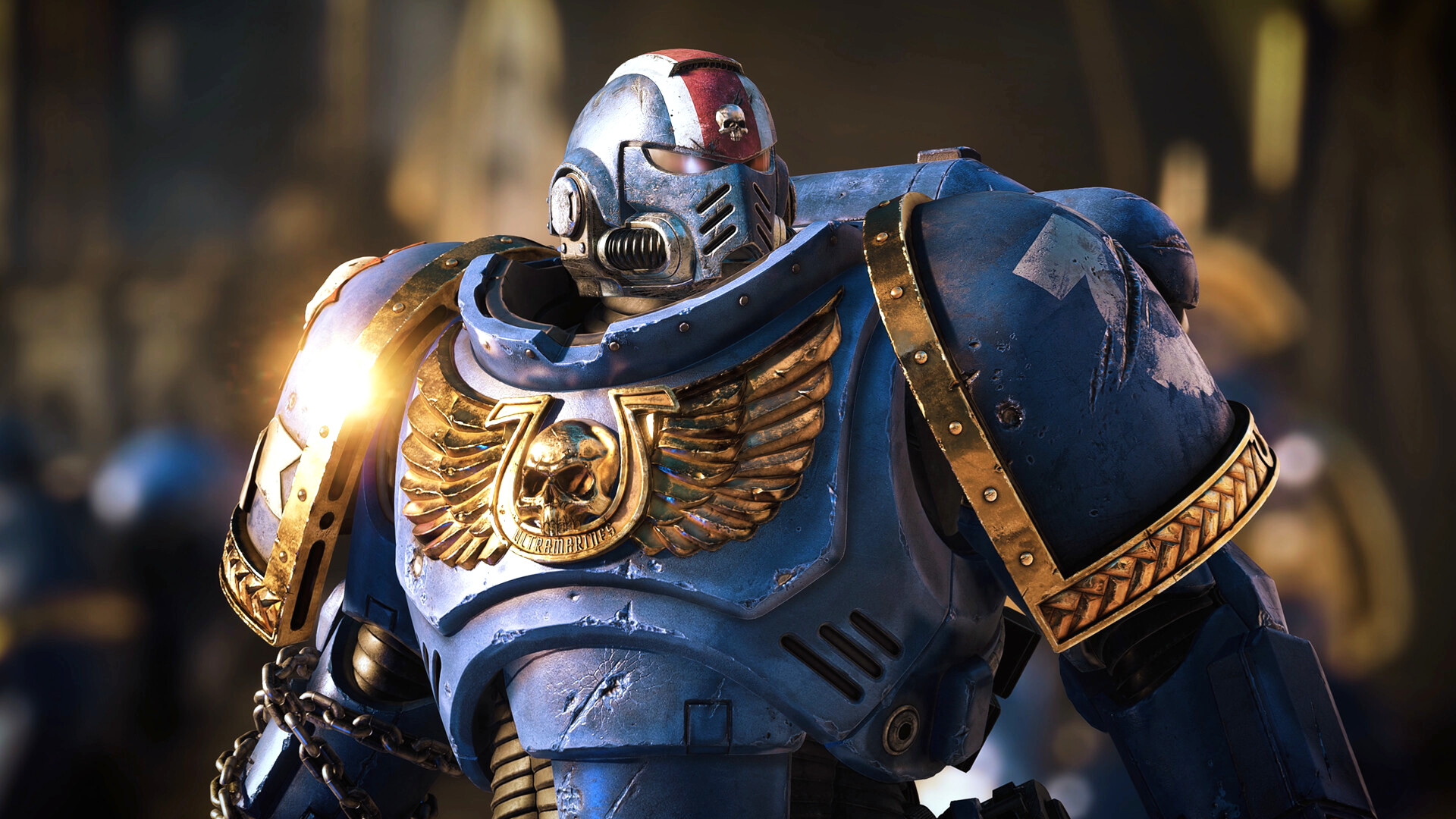
Depending on how tuned into the world of 40K you are, Warhammer 40,000: Space Marine 2 may have come out of nowhere. Yet even the biggest Warhammer enthusiast would have struggled to predict how well it would do – the sci-fi action game sold over two million copies within a day of launching, and it's the fastest-selling game that Saber's CCO has ever worked on.
Speaking to GamesRadar+, game director Dmitriy Grigorenko admits that even those at developer Saber Interactive has been blindsided by Space Marine 2's performance. "I don't know if people know this, but 80% of time, video games – when you make them – look like absolute ass," he says, grinning. "It's only when the last piece of the puzzle begins to fall down, everything begins to click. So at some point during development, I knew things began to click and I knew this game would resonate with our fans, like the original [Space Marine]. But the fact it's been such a big success, and it's had such a warm welcome with journalists and fans, was a surprise for me."
But, in a year when giants like Square Enix and Sony have struggled to find success, one big question remains: why has Space Marine 2 made it look so easy?
Making a hit
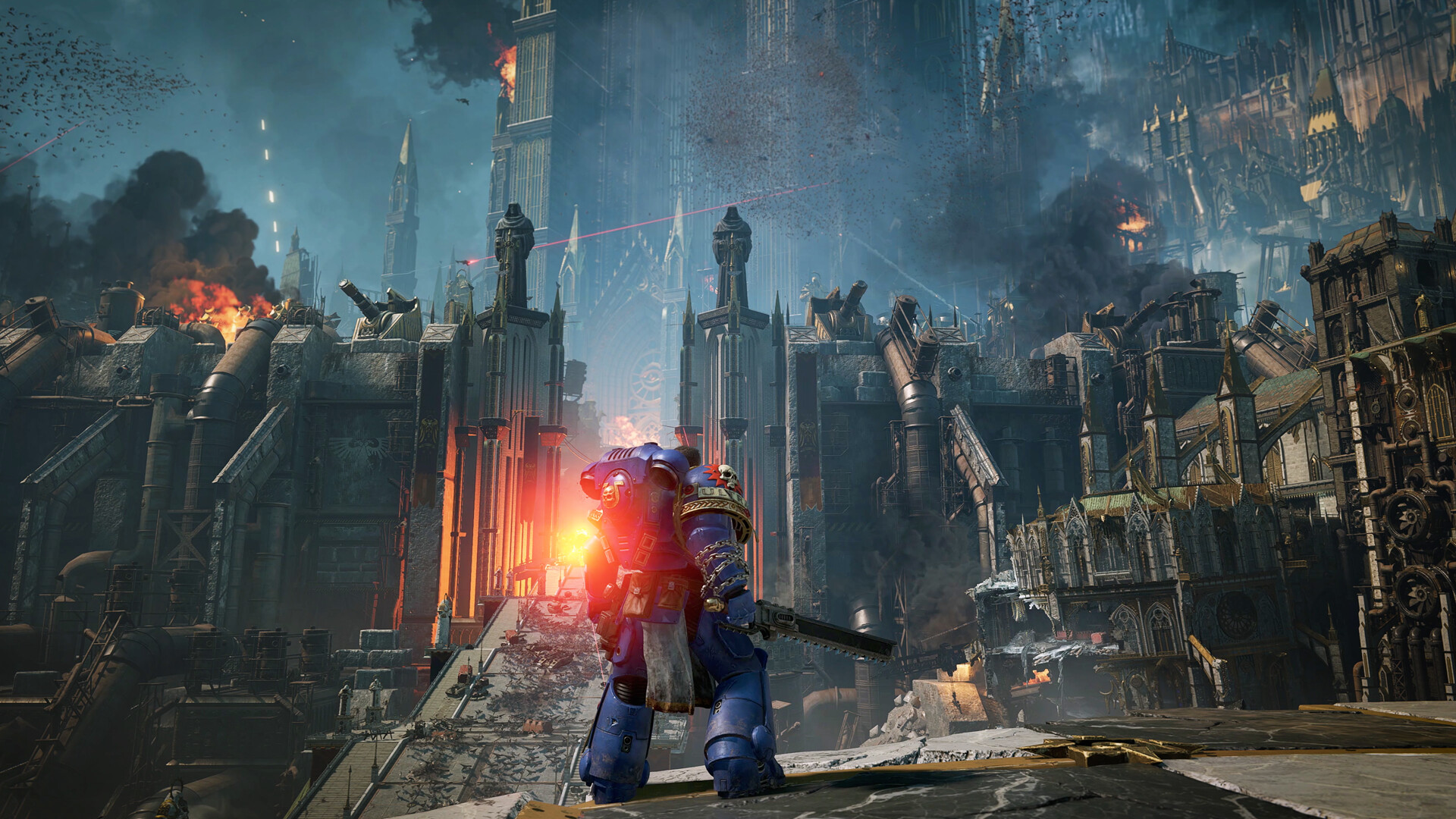
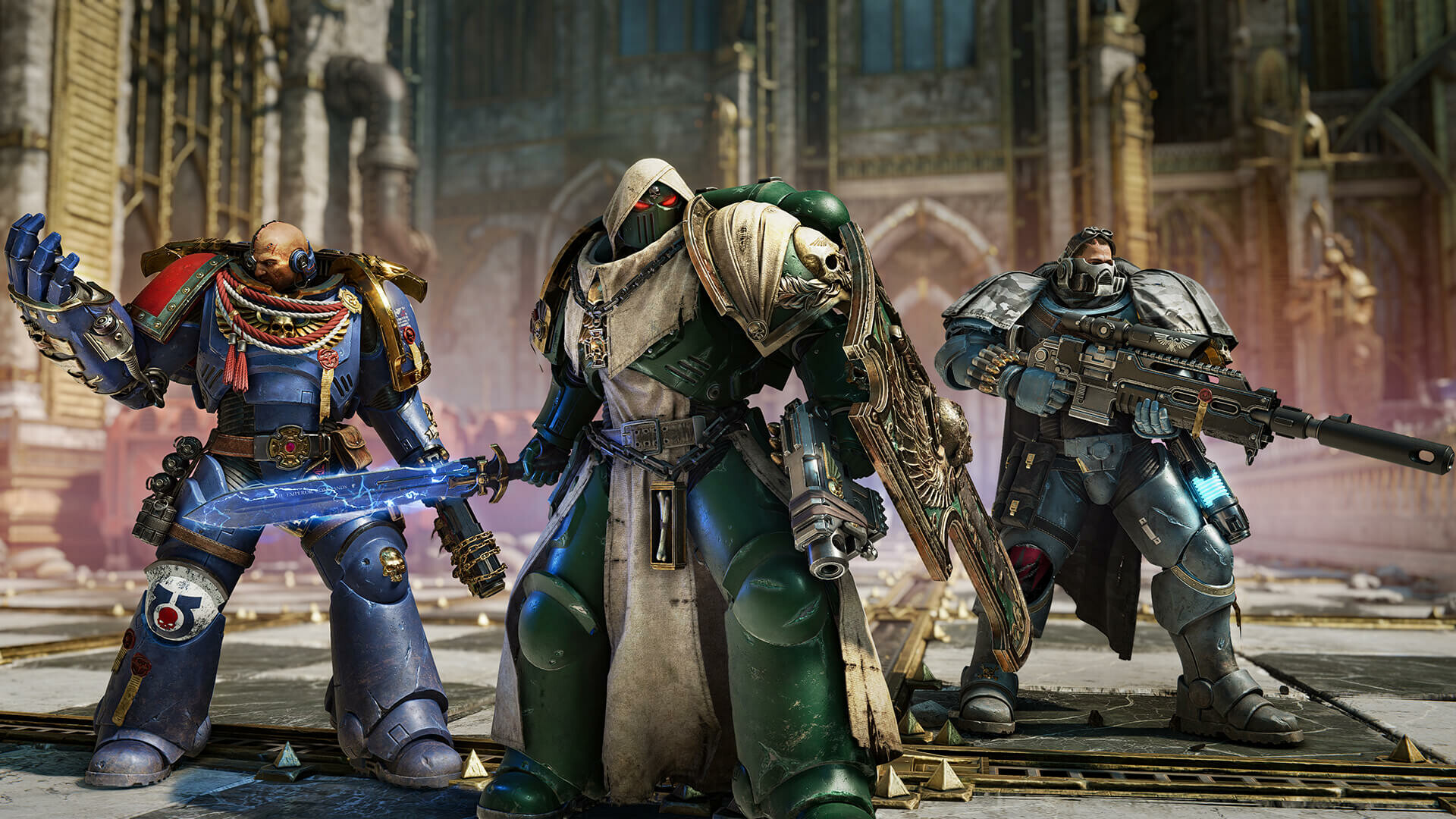
Warhammer 40,000: Space Marine 2 review: "Raises the bar for all Warhammer adaptations"
Space Marine 2 is a twofold victory. On one hand, it plays the role of faithful Warhammer adaptation perfectly, capturing the violence and galaxy-spanning scale of 40K like nothing that has come before. But it works just as well for those who can't tell the Emperor from an Eldar, as the game's overwhelming hordes of enemies and brutal melee combat are fun enough for anyone to enjoy.
As for how all of this translated to commercial success, there has been plenty of speculation. Fans have praised the game as a return to simpler times – a balm for those craving straightforward, cinematic shooters at a time where many studios are trying to replicate the success of live service multiplayer games like Fortnite and Destiny. Space Marine 2 has been favorably compared to the likes of Gears of War and Halo's campaigns, and has often been described as an Xbox 360-era shooter. But was that tone deliberate? "I didn't know it was that obvious," laughs Grigorenko. "But that was the intention."
"We wanted to make a perfect sequel [to Space Marine] – that was in the original pitch," Grigorenko says. "The 'perfect sequel' implies it's the exact same game – a 360 game with a story campaign, some PvP, and a horde mode to accompany it. We wanted to make a classic experience."
It's a tone that Oliver Hollis-Leick, Saber Interactive's creative director, is happy to have recaptured. "I recently went to an old friend's house, and we used to play all of those Gears of War games," he says. "I'd go around on a Friday night, and we'd play until we finished the campaign – you could finish the campaign in one evening. We'd drink, eat, and play. I went back to his house last weekend, and we played Space Marine 2 from start to finish. It was just this amazing flashback experience!"
Sign up to the GamesRadar+ Newsletter
Weekly digests, tales from the communities you love, and more
Besides drawing on older shooters, Hollis-Leick says that Saber Interactive's 2019 World War Z game revealed there was a "real market" for co-op horde shooters. "That game was part of our original pitch to Games Workshop," says Hollis-Leick. "They came in. We showed it to them and said 'okay, imagine that the zombies are Tyranids'. The look in their eyes as they realized the possibility was beautiful! That was combined with, as Dmitriy says, the inherent design of that first game. We basically took [Space Marine], evolved it, and made it a co-op experience."
Go big or go home
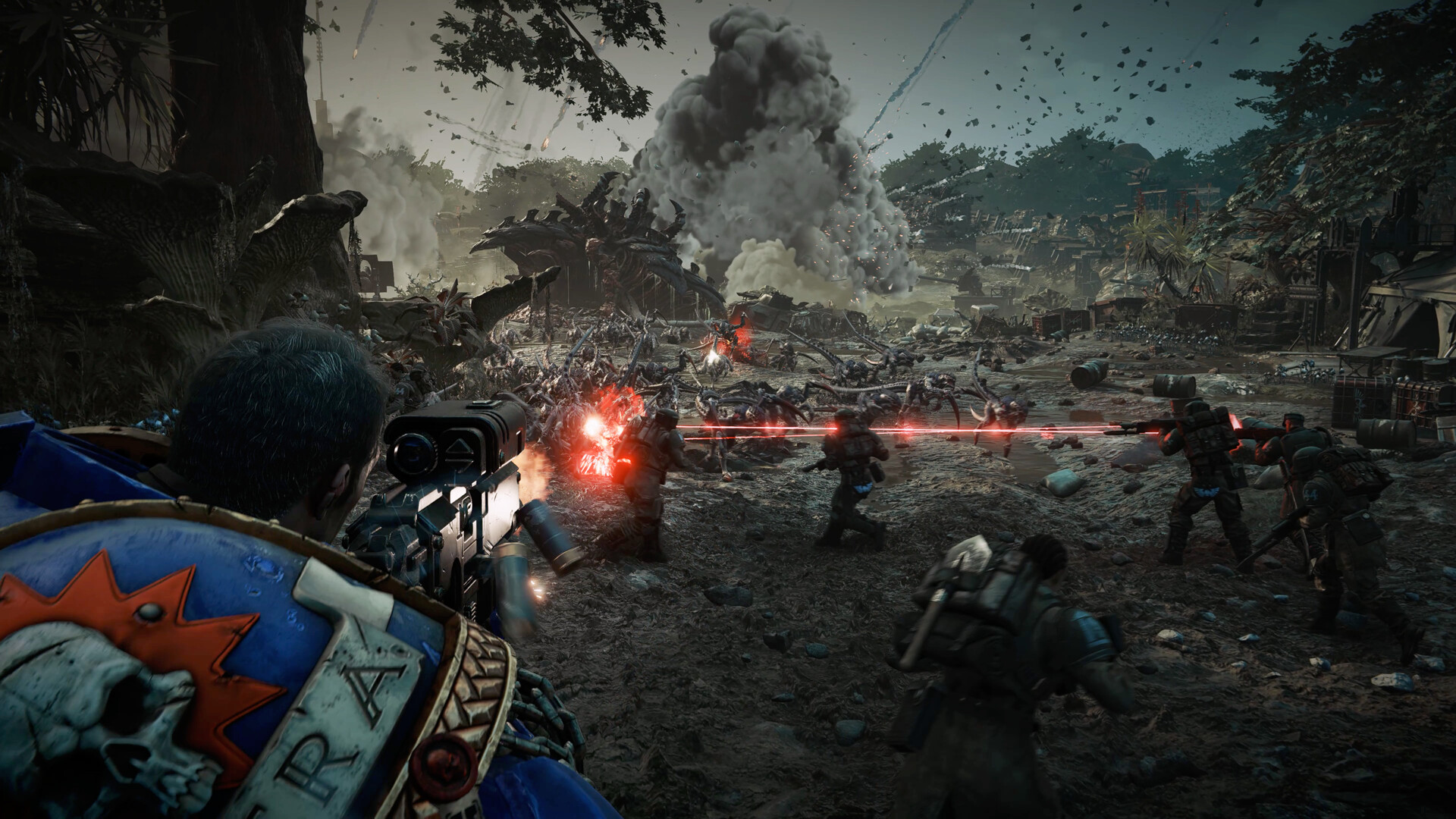
"It should always feel like the middle of the biggest war zone you've ever seen"
Oliver Hollis-Leick
Besides recapturing the glory days of shooter campaigns, Space Marine 2 is arguably the best 40K adaptation to date. Unlike many games set in the series, which work around its galactic scale by portraying relatively tiny slices of life in it, Saber Interactive knew from the beginning that it couldn't shy away from that size if it wanted to authentically present the power fantasy of playing a space marine.
"We wanted to go big," says Grigorenko. "We wanted to be a centerpiece of this – a poster boy for this universe. And in order to do that, we immediately knew that we needed to create these huge battle scenes."
I raise the game's hive city, Avarax, as an example of how well this is done. Gothic cathedrals reach into the heavens, while broad streets – often webbing above, below or in the far distance of players – are covered in seething masses of Tyranids. During one brief pause in the fighting, you can march through an Imperial Guard camp, where the wounded are being treated, a firing line is executing deserters, and vast columns of tanks drive by. It's a brief moment of reprise for the smaller troops, who are usually seen fending off Tyranids or firing lasers from mucky trenches on the jungle planet of Kadaku. Grigorenko, who pitched this exact scene to Hollis-Leick at the beginning of Space Marine 2's development, was keen to bring to life the massive battles he'd read in 40K books and seen illustrated by Games Workshop.
One of the game's guiding principles is that "it should always feel like the middle of the biggest war zone you've ever seen," adds Hollis-Leick. "And so there was really no other way to do it, and we just had to make it work."
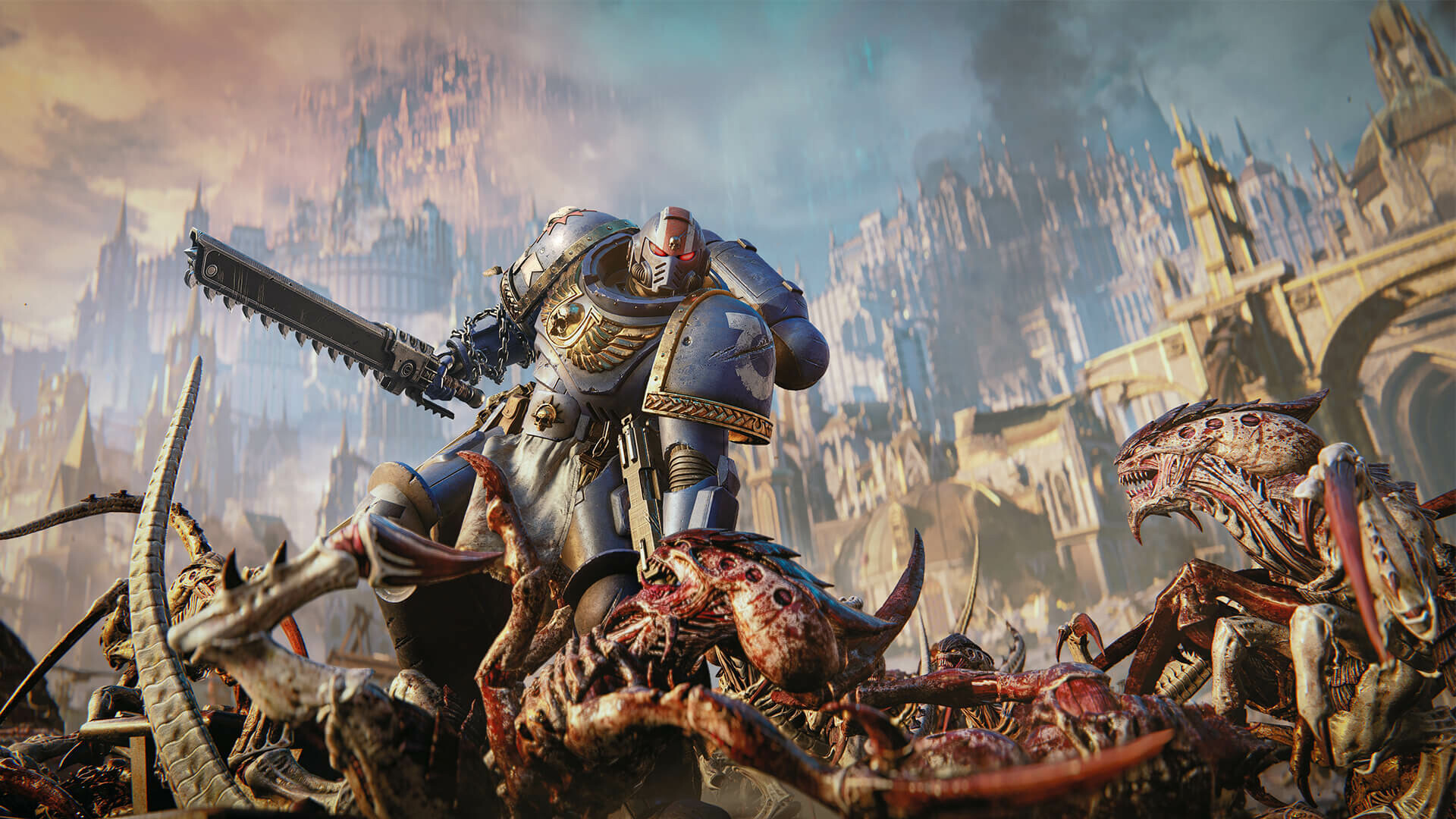
Bringing that to life proved difficult. Prior delays were due to technical issues, says Grigorenko, and the team "immediately" ran into thematic issues whilst trying to bring that sense of scale to life. As Grigorenko points out, trying to make anywhere feel big is difficult when you're playing a towering space marine in tank-like armor. As a result, the game's Cadians – human soldiers – were added to "anchor your perception of scale". The effect is twofold: not only does it make Avarax's giant buildings look even bigger, but it makes the players' hulking space marine feel even more powerful.
"The thing that impresses me a great deal is the work of the artists on the game," adds Hollis-Leick. "The sheer level of detail is extraordinary, and I think it speaks quite a lot to the passion involved. Remember, the first half of this production happened during covid, and so I would be on the phone to people, and you'd see their collection of paints growing in the background, and you'd see the brushes, and then the miniatures [...] that kind of level of quality only comes from genuine passion."
The effect is undeniable: it really does feel like you're playing an unstoppable soldier in a galaxy-spanning war. Yet casting players as a space marine is as much a blessing as it is a curse – while they're the perfect vehicle for action-packed sequences, their inhuman-ness means squeezing personality from them can be a nightmare. Space Marine 2 tries to build drama by having marines Chairon and Gadriel suspect protagonist Titus of heresy, but this doesn't quite go anywhere and ultimately sizzles out just over halfway through the game.
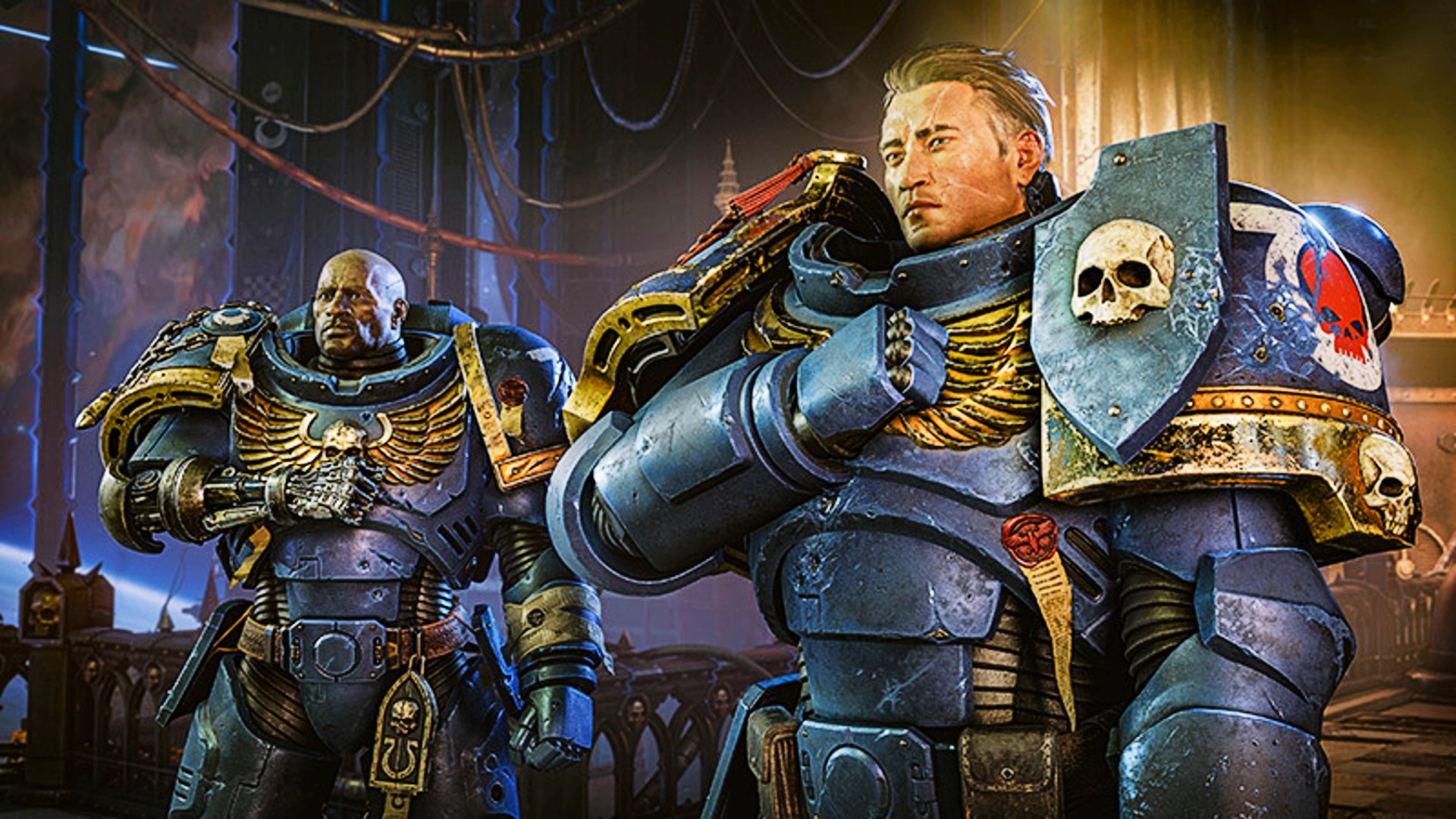
Hollis-Leick explains that Games Workshop was "very clear" that the game had to accurately present space marines as the inhuman soldiers they are, rather than some of the more personable depictions that have appeared in Black Library books. "Those guys don't have heart to hearts, so it required some flexing of the rules to get any of that in," he says. The creative director adds that Saber was also restricted narratively due to Space Marine 2's co-op elements, which meant that some people would play through the whole campaign as Gadriel or Chairon rather than Titus.
"Compromises were made," he explains. "It was trying to pitch it in the best, optimal place for the conditions we had [...] If Gadriel and Chairon were not playable characters, we could have done way more. We would have more control over them going off and doing their own thing, and like even becoming a source of conflict during the mission. And then, one of the levels where we tried to do that, is where Chairon goes rogue on his own and gets separated from the rest of the squad. And that, that was us really trying to stretch that. So it felt like they were divided for a time, but, yeah, the closest we could get is for Gadriel and Titus to almost kill each other in a cinematic, and then, and then we've got to go back into battle again as a three man team. So yeah, the co-op thing makes that tough."
Grigorenko admits Hollis-Leick had a "very difficult task" with the narrative. "I remember arguing with him a lot, saying that there's not enough time for our characters to talk about the plot, to argue with each other, because there's stuff exploding in the background. Nobody's going to listen to that – we have to be short!"
Tyranids over trends
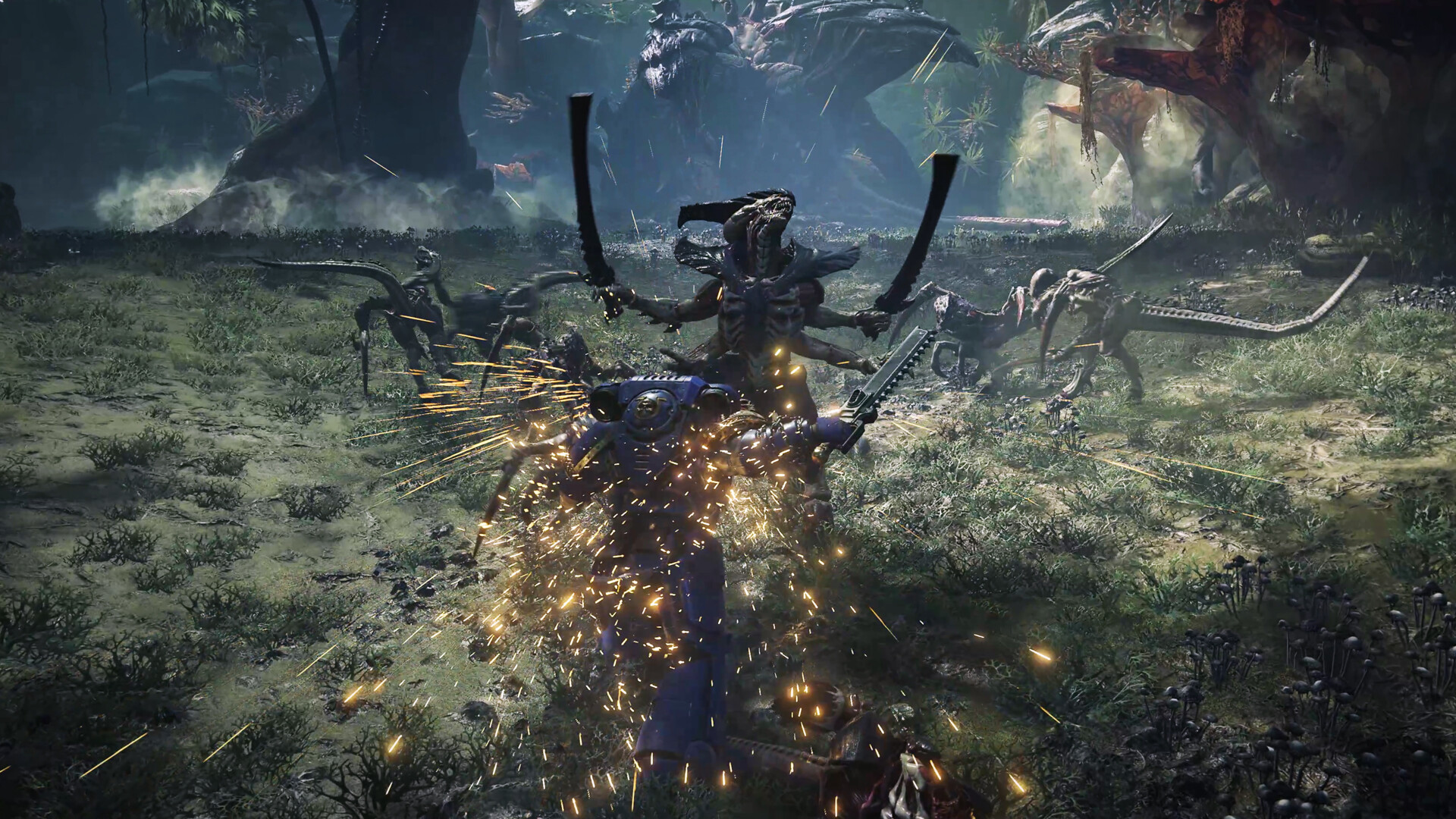
"We don't want to be in this endless loop of releasing content as soon as possible"
Dmitriy Grigorenko
As our interview draws to a close, we once again swing back to why Space Marine 2 has been so successful. Speaking to a bigger picture, the duo both point to where Space Marine 2 sits within the video game industry. Grigorenko argues that the market has become "oversaturated" with "very long" games and live service titles, which Space Marine 2 defies.
"People are chasing trends too much, I would say," he says. "And I mean, in case no one noticed, the game industry is in a crisis right now. There are a lot of layoffs. A lot of studios are trying to repeat themselves because one game was successful [and they say] ''We need to try to do the same thing and we'll also be successful'. But this is why we have this problem right now! It's not like I'm against games as a service – I think I've played like 1000 hours in Destiny. I really like it, but I don't think everyone else needs to do exactly the same game. This is why people, I think, like our game. It's different, but it's not different. We used to have games like this."
Hollis-Leick agrees, and draws parallels to the film industry. "The movie industry is so financially motivated, and there are so there's so much at stake every time they set out to make a movie, that they inherently become risk averse. They look for formulas, and you get sequels, which are just about repeating the same thing with a different hat on. And the movie industry has become quite stale in lots of ways now, and movies feel repetitive. And I think the same thing has happened with video games. You get a lot of people chasing trends, as Dmitriy said – people trying to, you know, win big, and it just gets financially motivated.
"Our leadership is pretty bold and quite brash, and they have a good nose for fun," Hollis-Leick continues. "They've always wanted to make fun games. And I think the success of World War Z, plus the natural kind of game that [the first] Space Marine was, plus the passion of the team that made it, have come together. Somebody was willing to take that risk instead of chasing another battle royale game. All of those things have just really paid off."

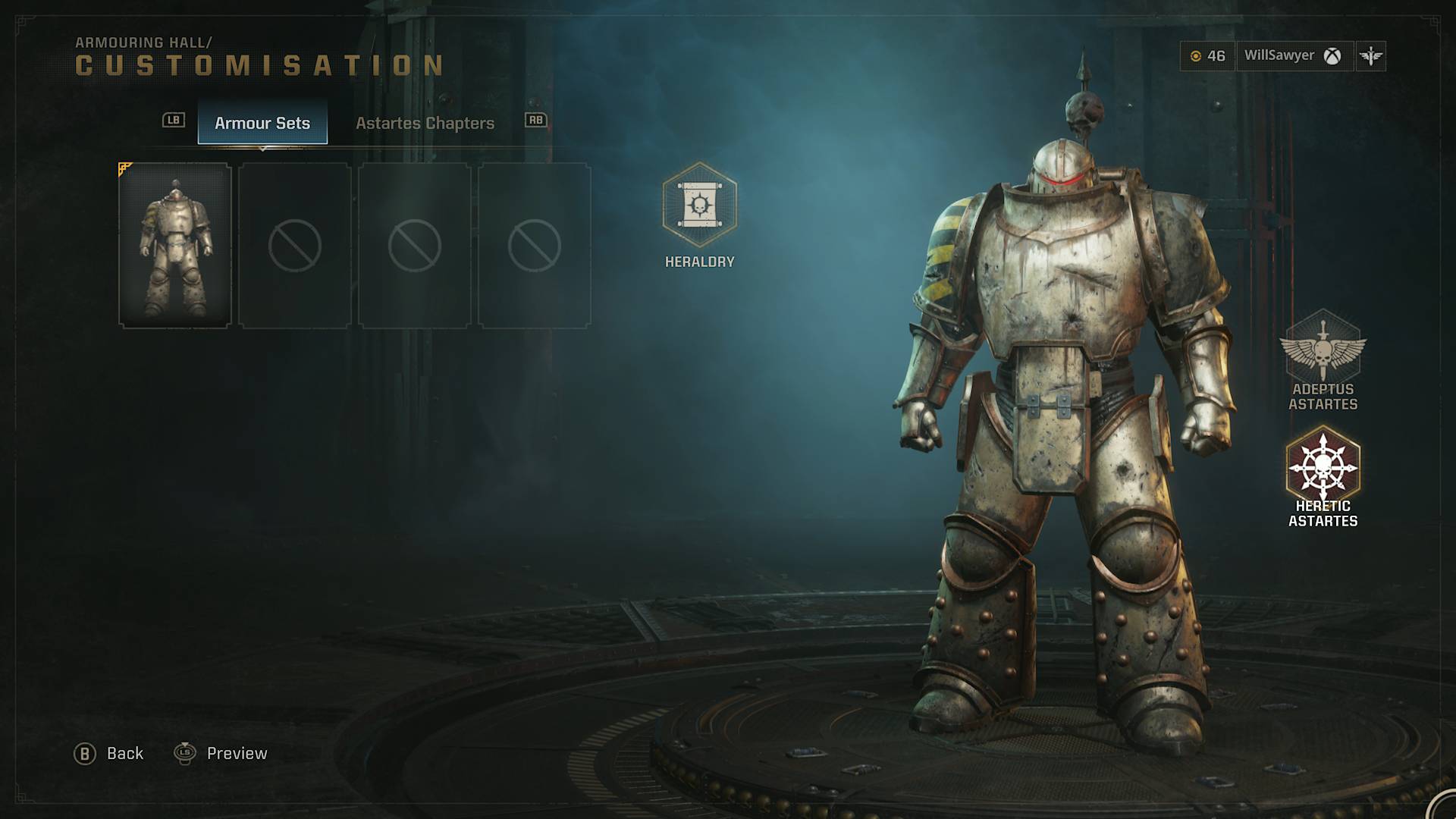
It feels ironic, then, to ask whether Space Marine 2's financial success has changed plans to support the game post-launch. Grigorenko points to Saber's support for past games World War Z and Snowrunner, which have been given updates and DLC for years after launch, as examples of how support could be continued. "Year one is just the start, and if there's enough player interest, we'll continue to support it absolutely," he says, though makes it clear that he does not consider Space Marine 2 to be live service. "In order to make a game as a service thing, you need to make sure that you build it from scratch. You need to build it from the fact that this game can be played endlessly. Our game is not built like that [...] We don't want to be in this endless loop of releasing content as soon as possible and stuff like that."
While that may be a tough pill to swallow, perhaps it's this sort of thinking that has led to Space Marine 2 selling millions of copies. That, or maybe – just maybe – people just love blasting Tyranids. Who, besides the Emperor, can say for sure?
Space Marine 2 is one of this year's best shooters, so we'll be carrying on the conversation around this game throughout the week – stay tuned as Grigorenko and Hollis-Leick join us to discuss the game's highs, lows, and stories about development.

Andy Brown is the Features Editor of Gamesradar+, and joined the site in June 2024. Before arriving here, Andy earned a degree in Journalism and wrote about games and music at NME, all while trying (and failing) to hide a crippling obsession with strategy games. When he’s not bossing soldiers around in Total War, Andy can usually be found cleaning up after his chaotic husky Teemo, lost in a massive RPG, or diving into the latest soulslike – and writing about it for your amusement.


